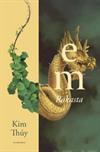
The Book of the Travels (Sefer haMasaoth) of Benjamin of Tudela
Registered by Horapollo on 2/12/2003
1 journaler for this copy...
Published in Greek, in 1994 (Stohastis Publishing House, Athens - Greece), 264 p., the book consists in a tripartite contribution to what seems to be the first publication in Modern Greek of a Medieval Jewish book. The author has been assisted in his demarche by two specialists, the Greek byzantinist Aleexis Savvides and the historian Foteini Vlahopoulou. It is essential to specify the contribution of every part in this interdisciplinary approach. F. Vlahopoulou translated from English to Modern Greek the text, being based on the text of the Adler’s edition of Sefer haMasaoth. The general, linguistic and historical, supervision of the translation was carried out by the main contributor, Cosmas Megalommatis. The Introduction was complied by both, Cosmas Megalommatis and Alexis Savvides. The vast Commentary was another field of double contribution, whereas the General Bibliography at the end was the concern of A. Savvides. The book has been enriched by maps and other pictorial documentation. As far as the Introduction and the Commentary are concerned, Megalommatis covered all the subjects related to Jewish and Oriental Studies, whereas Savvides tackled anything related to eastern Roman (Byzantine) Studies. Because of the nature of the text, the part of Megalommatis’ contribution exceeds three fourths in the Preface (p. 15 – 52) and surpasses 95% of the vast Commentary (p. 115 – 244) that has been printed in very small characters. The translation (p. 55 – 114) offers to the average Greek readership an excellent and correct approach to the narrations of the most important medieval Jewish traveler. For an anti-Semitic country like Greece, where there is no Department of Hebrew and Jewish Studies until today, this is a great achievement.
The Introduction offers many chapters on detailed subjects such as Benjamin of Tudela, the ideological orientations of Judaism at the times of Benjamin of Tudela, the quest of Benjamin, the work of Benjamin, the itinerary of Benjamin, the modern scholarly use of Benjamin's book, fundamental approaches and problems of the Sefer haMasaoth. The author makes clear reference to the subject of the Ten Lost Tribes of Israel as the main target of Benjamin's travel and written narration. He rejects the traditional theory of a Jewish inventory allover the Middle East (Benjamin crossed areas of cities with large Jewish population and yet he did not visit and he did not mention these cities), as well as the French Annalistes' approach that focuses on trade needs and relations. One must however admit that references to the Ten Lost Tribes of Israel are bundant throughout Sefer haMasaoth and in many parts of his work Benjamin highlights his interest to meet and encounter the descendants of the Ten Lost Tribes.
The most interesting part of the book is definitely the Commentary. In it one can find brief or even large essays on subjects that are completely unknown to the average Greek readership. Most of them are of rather encyclopedic character, yet in several among them one can find the authenticity of an academic article. We may suggest several for reading: no 4 on Halakhah, no 10 on Torah, no 24 on Talmud, no 25 on the terms Israel and Judah (as well as on the Ten Lost Tribes), no 30 on the Talmudic Academies, no 32 on Goim, no 71 on Assyria and Monotheism, no 112 on systems of thought and concepts of the parts of the Horizon, no 125 on Karaim, no 136 on Sabbath and Sabbatiyon river, no 148 on Al Hashashin - the Assassins, no 186 on the Sea Peoples origin
of the Philistees, nos 222 - 234 on Jerusalem, no 276 on the Hillel and Shamai schools, no 303 on Tadmur/Palmyra, nos 316 - 349 and nos 387 - 432 on Mesopotamian historical sites and topography, no 375 on Geonim, no 434 on Ancient Geography about India, Egypt, Meroe, Arabia and the Red Sea area, nos 443 - 456 on South - Eastern Mesopotamian and Western Iranian topography, no 458 on Targumim, no 463 on David Elroe and the concept of Messiah in ancient religions, Judaism and Islam, nos 475 - 491 on Eastern Iranian and Central Asiatic topography, no 494 on how to clarify and understand several topographically obscure passages of Benjamin's narrations about his trip from Persia through India and Yemen to Upper Egypt, nos 505 - 559 on topographical points in India, Yemen, Abyssinia, Meroe (Sudan) and Egypt, as well as no 563 on the Lighthouse of Alexandria.
What makes this book extremely interesting is not the rich number of comments or the discussion of so crucial subjects as the Ten Lost Tribes and the Assyrians (in an effort of identification after their migration from their original countries) or the concept of the Messiah in almost all the religious systems that led to the formation of the Modern Middle Eastern and the Western worlds; the general background, the erudite environment and the deep historical understanding matter even more.
The Introduction offers many chapters on detailed subjects such as Benjamin of Tudela, the ideological orientations of Judaism at the times of Benjamin of Tudela, the quest of Benjamin, the work of Benjamin, the itinerary of Benjamin, the modern scholarly use of Benjamin's book, fundamental approaches and problems of the Sefer haMasaoth. The author makes clear reference to the subject of the Ten Lost Tribes of Israel as the main target of Benjamin's travel and written narration. He rejects the traditional theory of a Jewish inventory allover the Middle East (Benjamin crossed areas of cities with large Jewish population and yet he did not visit and he did not mention these cities), as well as the French Annalistes' approach that focuses on trade needs and relations. One must however admit that references to the Ten Lost Tribes of Israel are bundant throughout Sefer haMasaoth and in many parts of his work Benjamin highlights his interest to meet and encounter the descendants of the Ten Lost Tribes.
The most interesting part of the book is definitely the Commentary. In it one can find brief or even large essays on subjects that are completely unknown to the average Greek readership. Most of them are of rather encyclopedic character, yet in several among them one can find the authenticity of an academic article. We may suggest several for reading: no 4 on Halakhah, no 10 on Torah, no 24 on Talmud, no 25 on the terms Israel and Judah (as well as on the Ten Lost Tribes), no 30 on the Talmudic Academies, no 32 on Goim, no 71 on Assyria and Monotheism, no 112 on systems of thought and concepts of the parts of the Horizon, no 125 on Karaim, no 136 on Sabbath and Sabbatiyon river, no 148 on Al Hashashin - the Assassins, no 186 on the Sea Peoples origin
of the Philistees, nos 222 - 234 on Jerusalem, no 276 on the Hillel and Shamai schools, no 303 on Tadmur/Palmyra, nos 316 - 349 and nos 387 - 432 on Mesopotamian historical sites and topography, no 375 on Geonim, no 434 on Ancient Geography about India, Egypt, Meroe, Arabia and the Red Sea area, nos 443 - 456 on South - Eastern Mesopotamian and Western Iranian topography, no 458 on Targumim, no 463 on David Elroe and the concept of Messiah in ancient religions, Judaism and Islam, nos 475 - 491 on Eastern Iranian and Central Asiatic topography, no 494 on how to clarify and understand several topographically obscure passages of Benjamin's narrations about his trip from Persia through India and Yemen to Upper Egypt, nos 505 - 559 on topographical points in India, Yemen, Abyssinia, Meroe (Sudan) and Egypt, as well as no 563 on the Lighthouse of Alexandria.
What makes this book extremely interesting is not the rich number of comments or the discussion of so crucial subjects as the Ten Lost Tribes and the Assyrians (in an effort of identification after their migration from their original countries) or the concept of the Messiah in almost all the religious systems that led to the formation of the Modern Middle Eastern and the Western worlds; the general background, the erudite environment and the deep historical understanding matter even more.






